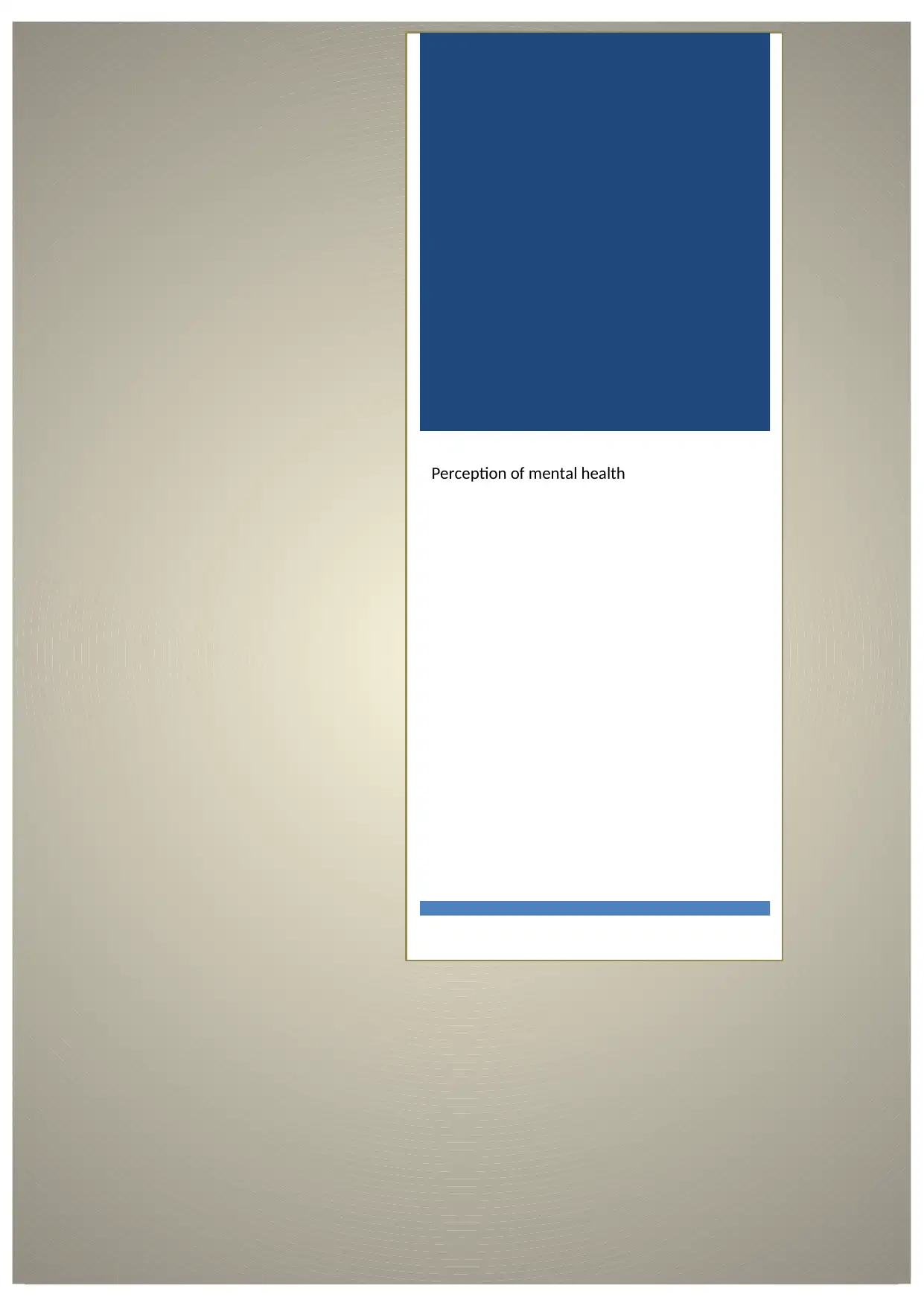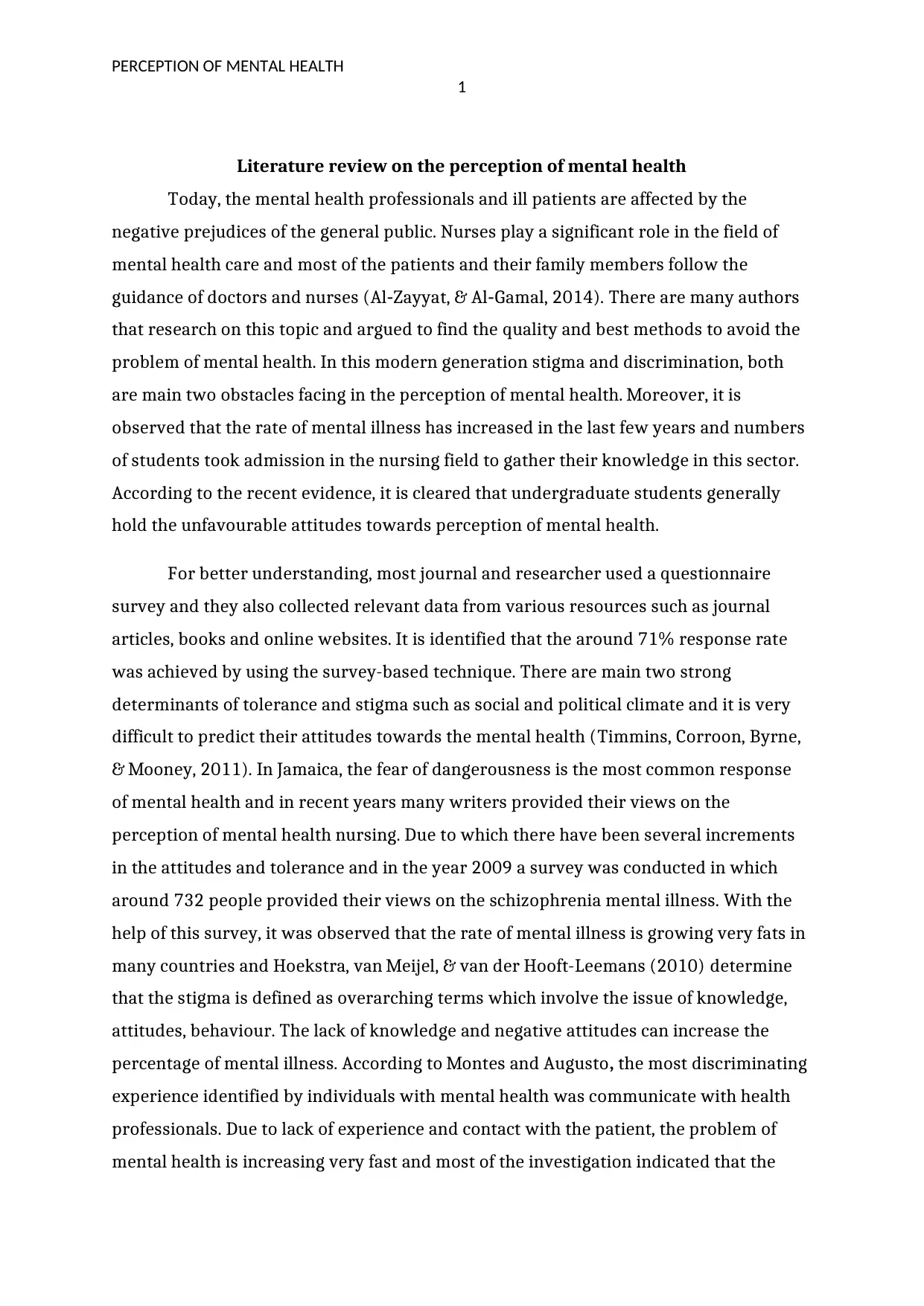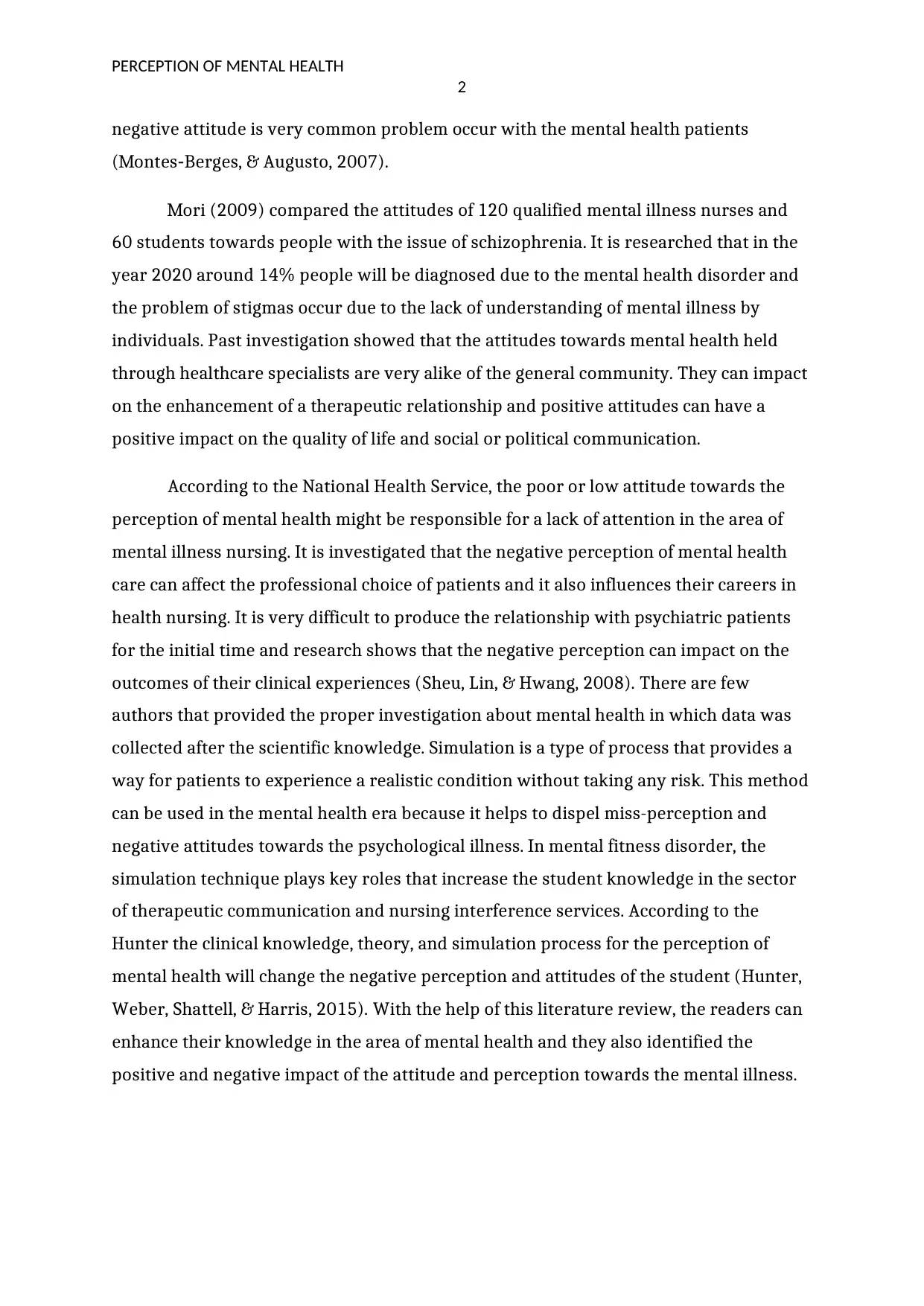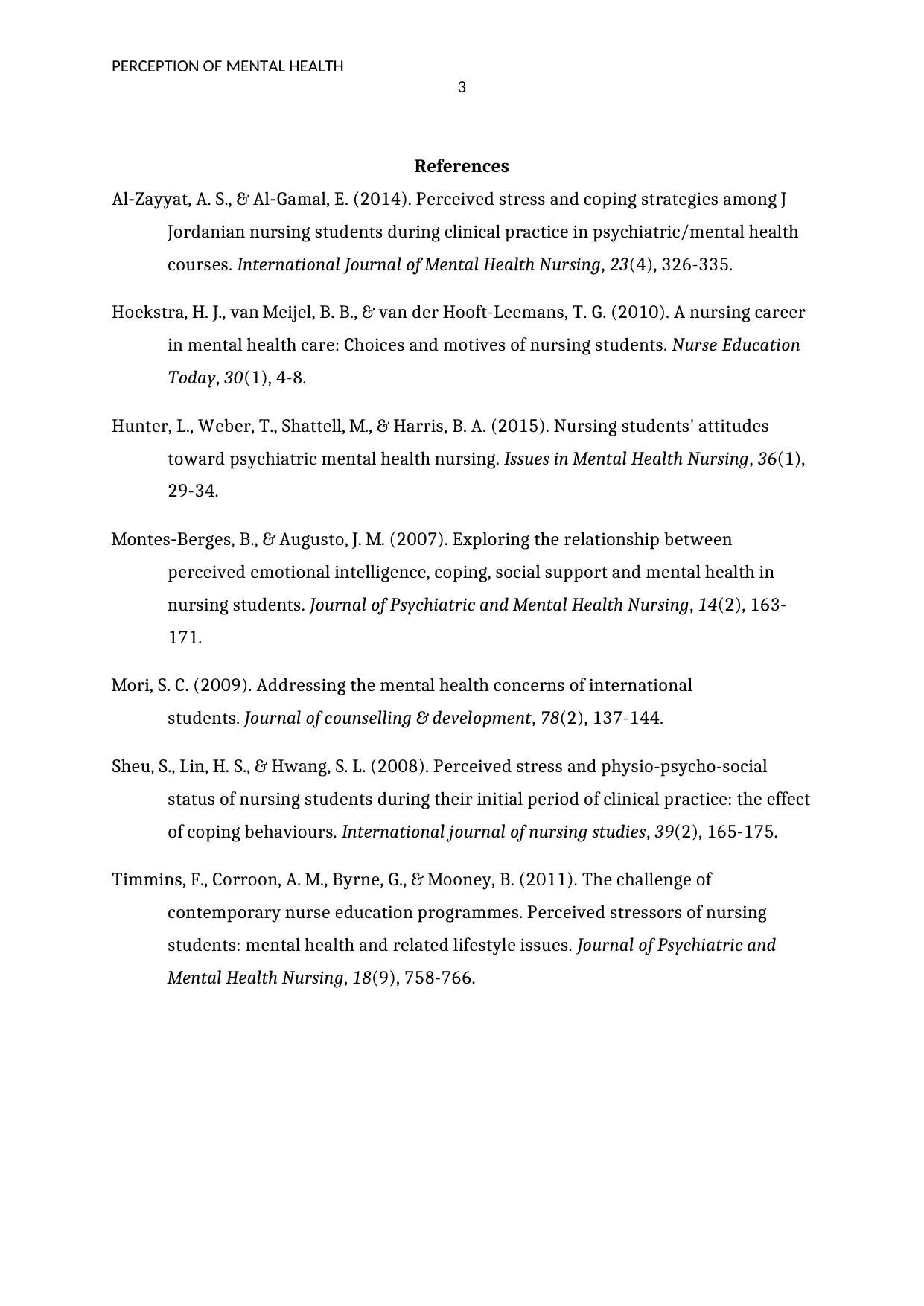The Perception of Mental Health: A Comprehensive Literature Review
VerifiedAdded on 2023/06/03
|4
|1213
|153
Literature Review
AI Summary
This literature review examines the perception of mental health, focusing on the negative prejudices faced by mental health professionals and patients. It highlights the significant role of nurses in mental health care, citing various research studies that explore the impact of stigma and discrimination. The review discusses the rise in mental illness rates, particularly among students, and the unfavorable attitudes often held towards mental health. It references studies employing questionnaires and data from diverse sources to understand determinants of tolerance and stigma, such as social and political climates. The review also covers specific issues like the fear of dangerousness in Jamaica, the impact of lack of knowledge and negative attitudes, and the experiences of discrimination faced by individuals with mental health issues. It further explores the attitudes of healthcare professionals, the influence of simulation methods in dispelling misperceptions, and the effects of negative perceptions on clinical experiences and professional choices. The review emphasizes the importance of addressing these issues to improve therapeutic relationships and the quality of life for individuals with mental health disorders.
1 out of 4











![[object Object]](/_next/static/media/star-bottom.7253800d.svg)